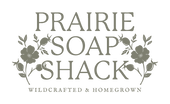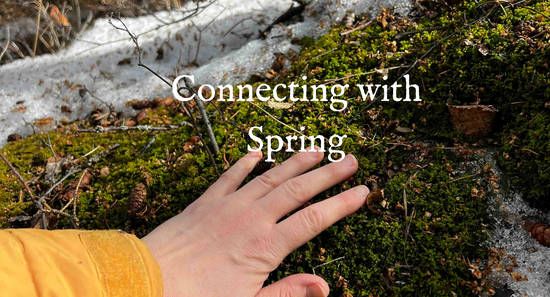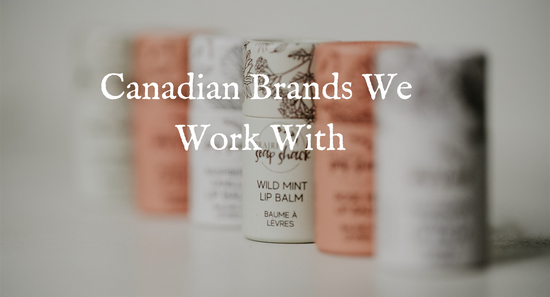I’m called many titles… mom, wife, auntie, nurse, soap-maker, and now a forager. A what? A forager. Do people still do this in 2020? There is certainly a small community of such people however I maybe only know of a handful myself. By definition, a forager is a person that searches wildly for food or provisions. A gatherer. A searcher.
I haven’t always been an avid forager, however. The extent of my ‘gathering’ was picking the occasional wild saskatoon or raspberry. But now that I am in that next phase of my life, back in the country after living the city life, I am outside every day with my children and taking more notice of our surroundings. We’d play the “senses game” of what do we see, hear, smell, touch, taste, feel… and that started to connect us more with nature. Those slow, long walks around our farm had me taking more notice of the trees, bushes, and wildflowers (weeds, as most people around here prefer to call them!).
I’ll back up and give my childhood a mention. I spent most of my early childhood years with my Grandparents on their farm (which is where we are actually living now). My parents were both working and my older siblings were in school, so I spent a lot of time outside with my Grandpa helping with the animals, with my Grandma in her garden, or exploring through the bushes by myself. I can likely attribute my keen interest in nature to them. I remember looking for different mushrooms with my Grandma, picking gooseberries or wild saskatoons to bake with or preserve. We would go to look for the first crocus sighting in early Spring. I remember one time canoeing on the Battle River and my Grandma could smell high-bush cranberries a couple hundred yards around a bend before anyone could even see them. Memories like that make a larger impression on you when you’re older and can appreciate it more.
Then one fall, a couple years ago, I was outside and looking at all the rosehips on the wild roses along our bush line and thought there must be something I can do with these. I googled it and learned to wait till after the first frost, then harvest the rosehips. I chose to dry them, crush them and make a tea, which is packed with Vitamins A, B, E, K, and just three rosehips contain as much Vitamin C as an orange. I was pretty proud of myself and felt like I had just discovered something so amazing, and it had been right in front of me the whole time. So why don’t we all see these abundant provisions on the land we live?
I read something that really struck a chord with me. From the Lone Pine “Edible & Medicinal Plants of Canada” it reads “All animals, including humans, depend on plants for survival. Throughout human history, plants have provided us with food, clothing, medicine and shelter. Our ancestors needed to know which of their local plants were edible or poisonous, which could heal or harm and which could provide materials for making implements, clothing and shelters. Today, many of us spend our lives in artificial environments, isolated from our natural surroundings. Most of life’s necessities are mass produced elsewhere and purchased as needed. We no longer forage for food, build our shelters or gather fuel for heating and cooking. Instead, we depend on hundreds of people in our society to supply the knowledge, materials and skills necessary to feed, clothe and house us. As we grow increasingly isolated from our natural surroundings, it is easy to forget that the air we breathe, much of the food we eat and many of the drugs we use come from plants. Recognizing wild plants and knowing how they have been used in the past increases our appreciation of the environment.”
How true is that? I feel blessed to be able to live in the country, in the Alberta Prairies, and have this beautiful environment surrounding us. Yes, with all the cultivated land and invasive aggressive weed species from around the world, it is difficult to even find wild plant communities where natural, native plants persist. So I consider myself on the hunt, to be a gatherer in this current modern day world. I carry my reference book around and I ask questions to my knowledgeable parents and in-laws. I wish I could ask questions to my Grandma, or even 4 generations back to my Great-Great Grandparents who settled on this land.
I am proud when my 3-year old son is outside with me and says, “look at these buds growing, Mom” and “come see this moss growing under this log” or “watch out for these thorns on the rose bush”. He is already so aware of nature and our surroundings that I hope it keeps both my boys grounded as they grow up in this busy world.
So far this Spring I have foraged pine resin, juniper berries, balsam poplar buds and a few crocus petals. I’ll be outside lots this Summer as my searching continues for hidden gems! Without sounding too cliché, it does feel like all this searching has helped me find myself or my passion.
Do you live in Central Alberta? Are you a forager or interested in it? If so, then connect with me as I’d love to share knowledge of local plants and a mutual interest.






1 comment
I am a 21st century forager too and I love it! I am picking dandelion leaves for a dandelion bruschetta and I’ve taken loads of mushroom classes from the U of A. I was raised in the country, lived in many cities, then the country for 10 yrs and now my husband and I live in a small city. We go to our northern lake cottage and I forage every chance I get. But urban foraging is also wonderful – my friends and family laugh but they certainly enjoy eating all of my finds. Lol. Wanted to let you know you’re not the only forager – we almost need our own society! Thanks for writing!